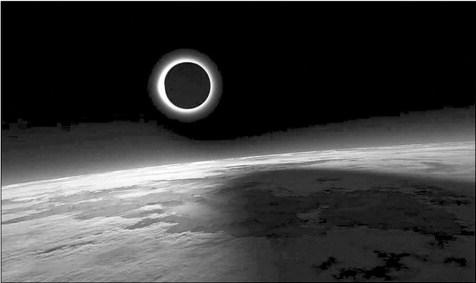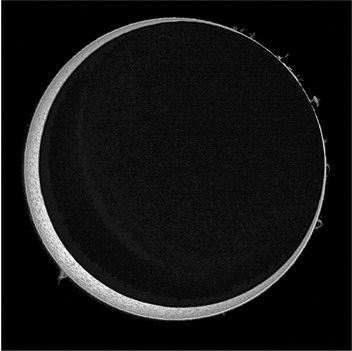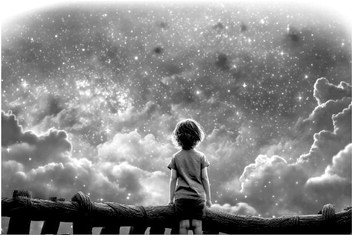Taking in October’s annular eclipse
This month’s astronomy article is going to be only about the very rare “Ring of Fire” annular eclipse that will grace our mid-day skies on Saturday, October 14.
I know you’ve heard a lot about this already but I’m going to give you some historical data and include a couple of photos courtesy of NASA.
I doubt if any of my readers have seen the annular eclipse photo taken from the space station in 2012. You can clearly see the shadow cast on clouds and the surface of the Earth which is the most interesting part to me.
First let me give Kim Blohm and the Greater Boerne Chamber of Commerce a lot of credit for keeping our area informed of the annual eclipse mentioned above, and also the total eclipse which will occur over our heads on Monday April 8, 2024.
Also, the city of Boerne has had many meetings regarding the potential impact of these two events on Boerne and Kendall County.
I’m always interested in history so here are several things you won’t tend to find in the public domain.
* The last total solar eclipse to be visible over any part of what is now Texas occurred on May 26, 1397, for 5 minutes and 1 second. That was 626 years ago! The only humans who saw this in Texas were proto-Indians.
* The last annular ring of fire eclipse visible from the Texas Hill Country occurred April 7, 1940. This event lasted 6 minutes and 15 seconds from the best spots. Previously, there was an annular ring of fire solar eclipse visible in the Houston area for 6:32 on November 22, 1919.
* The next annular ring of fire event visible from Texas will occur September 23, 2032. The path of annularity will enter Texas at the southwestern most tip of the state and make its way northwest, eventually departing in the Piney Woods region of Texas. We probably won’t see it in the Hill Country.
Regarding the April 2024 total solar eclipse, the next one visible from Texas will occur on August 12, 2045. The path of totality will enter Texas at the tip of Texas, like the 2032 annular eclipse above, and exit in the Piney Woods region. The Hill Country will be left out of that one, too.
For both eclipses, the chance of clear skies in our area stands at about 50% according to the National Weather Service. That’s actually better than most other areas for these events.
An annular eclipse occurs when the moon covers the sun’s center, leaving the outer edges to form a ring, “of fire.” The moon and sun are exactly aligned, but the apparent size of the moon is smaller than the sun.
As a result, the sun appears as a very bright ring surrounding the moon’s disc.
I’ve never seen an annular ring of fire eclipse nor a total eclipse, so I’m very excited about having this opportunity. You should be too.
The estimated number of visitors for the ring of fire event on Oct. 14 is expected to be between 25,00050,000 visitors to Boerne and Kendall County. The annular ring of fire eclipse will start at 10:20 a.m. but the main event occurs from 11:51 a.m. to 11:55 a.m. in Boerne.
This is a slow-moving event until near 11:30 a.m. or so, then it will all seem to happen very quickly. By noon it will be over for most people.
What’s VERY IMPORTANT -- since the sun isn’t completely covered during the annular ring of fire event, you MUST leave your eclipse glasses on the entire time. During totality in 2024 when the sun is completely covered, you can remove your eclipse glasses during the few minutes of totality. But for October’s event, you must have the eclipse glass on the entire time you are looking up into the sky.
The April 2024 total solar eclipse will bring well over 100,000 visitors, if we have clear skies. (The skies don’t have to be perfectly clear for either event to be spectacular; all we need is to not be completely heavily cloudy. Thin clouds will make interesting photos.)
Other astronomical events in our October skies: In the early morning hours of October 22, the annual Orionid meteor shower will be at its most prominent. This shower is associated with Halley’s comet and is known for producing fast and bright meteors. There is a waning crescent moon that will not interfere with this shower, since the moon will set at 11:45 p.m. the previous evening. Meteor showers are at their best after midnight.

The annular eclipse, taken from the International Space Station in 2012.

This NASA photo shows a close-up of an annular eclipse, with the sun forming a “Ring of Fire” around the moon. Courtesy Photos.




NIGHT SKIES
JACK ESTES








Comment
Comments